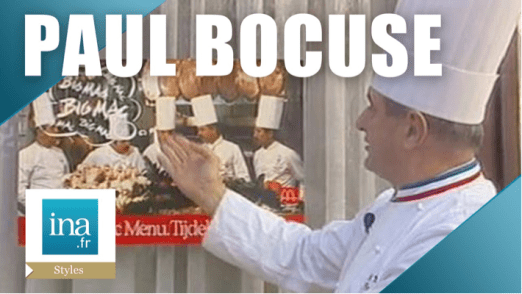Intellectual property at the service of cooking
Paul Bocuse, a leading French chef, passed away on January 20, 2018. We would like to pay a tribute to him by briefly mentioning what he brought to our sector.
A very media-friendly personality, Paul Bocuse was one of the first chef to regularly appear on television to share his expertise and establish his fame. Aware of the value this media could bring to his reputation, he managed the use of his name, associating it with several brands and his image.
In 1992, the American firm McDonald’s was imprudent by misappropriating a photograph of Paul Bocuse to advertise Big Macs in the Netherlands, and paid the price for it. On the McDonald’s poster, we can see the chef in his kitchen accompanied with other chefs who are dreaming for a Big Mac while they listen to him.
Paul Bocuse who was never approached for the rights to use his image, reacted by filing a complaint claiming the equivalent of 2.7 million euros in damages. In a television interview, he said that he wanted this money to finance his prestigious cooking school. He believed that “McDonald’s may sell good products but we’re not running the same distance, nor are we in the same category.” Two brands may both be leaders in their field, but they do not offer the same quality of products and thus justifying that one did not want his image associated with the other. The fast food chain immediately apologized, and the incident ended with a settlement.

Beyond his brands which were used for many things including derivative products like cooking utensils, Paul Bocuse also filed design rights for his wine coolers in the shape of a chef’s hat.
In cooking, even if the three-star Michelin chef decided not to do so, other intellectual property rights are pertinent to protect culinary creations.
Appearances of some dishes are so original that they can be covered by a copyright. This is the case when the display is a clear reflection of the chef’s personality, whereas protection is refused for dishes that have a more traditional appearance.

Dessert created directly on a tablecloth by Grant Achatz, clearly original.
The chef may have had no patent to his name, but technical solutions in the field of culinary design can be covered by patent law. We can imagine that a specific manufacturing process that results in a crispy appearance or soft texture could easily be patentable. Industrialists in this sector are fully aware of this and thus patents for culinary products and their methods of manufacturing are regularly issued by the European Patent Office. The INPI, the French trademark office, even issued a patent in 1996 for a “composite product made of shaped pastry or bread layered with at least two main soft parts and a middle crisp part”, in other words…a hamburger. (FR2744593B1).

Finally, recipes can be protected as a trade secret. It covers the entire process and must be a differentiative factor for people originating from the same profession, in this example cooking. Disclosing such a secret is punishable by a two-year term imprisonment and a €30,000 fine. Now we know that since the Ratatouille animated film, cooking is a craft which is transmitted by being an apprentice and thus all secrets are somewhat vain…
Paul Bocuse seems to have privileged transmission of his expertise, not only through his world-renowned cooking school but also to a broader public by his television appearances, an innovative concept at the time, and by publishing a dozen recipe books.



Leave a Reply
Want to join the discussion?Feel free to contribute!